Visit #2 - 7/30/2016
We are off again to the fair but this time with Robin, Bob, and Nick... It's tradition! We walked around from 10:00 AM until about 4:00PM seeing the sights and laughing!


Welcome to the Fair... We arrived at 9:45 and the parking was perfect!


The meat was on the griddle and smoking up a storm...
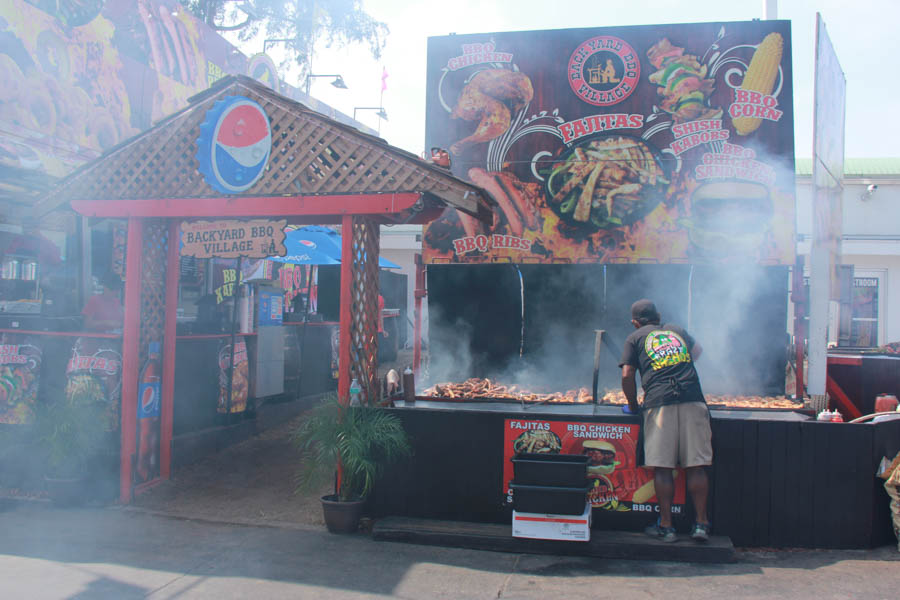
The smoke smelled so very good... But then...

Sue spotted the sign... OMG, what do we do now?

We checked out the possible source of vegetarian food

We walked through the Carnival of Products
- Much we have seen before

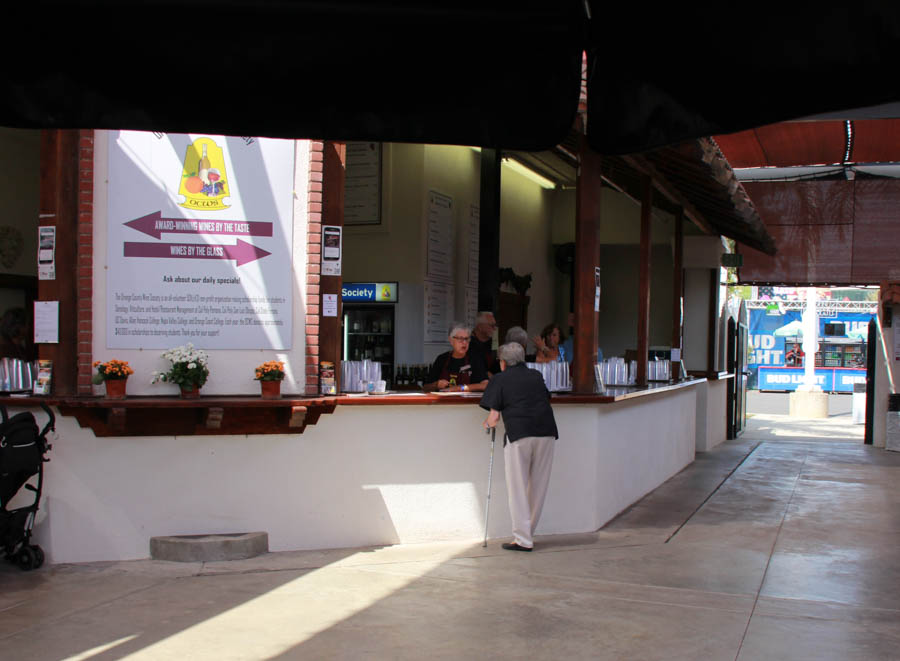
We went VFR to the Wine Patio!
It was an excellent place to meet up with the Duda's ...
Sue discusses the various Chardonnay's with the server


Robin checks out her back pack

Nick is all grown up

Bob always has a good time

Glasses check!

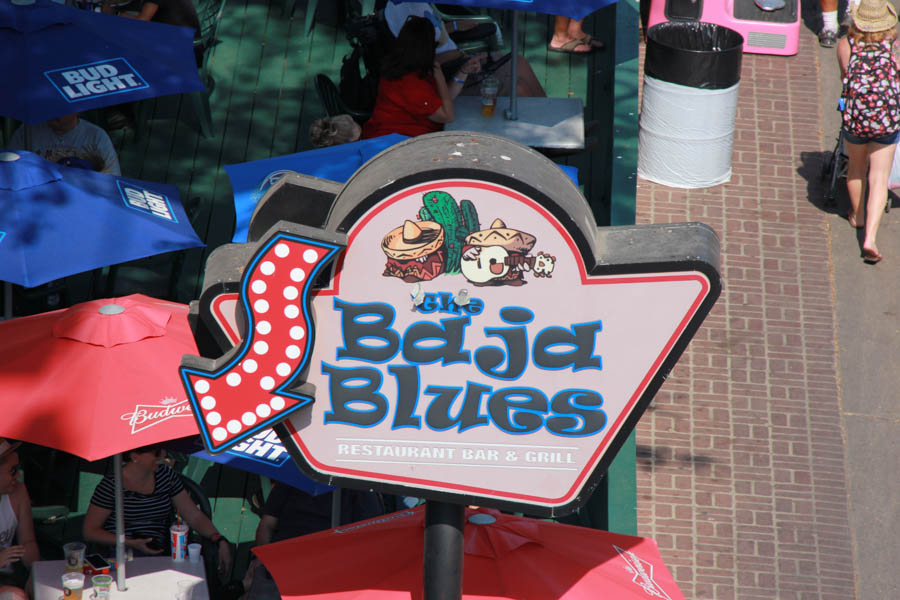
We headed for Baja Blues to find a table
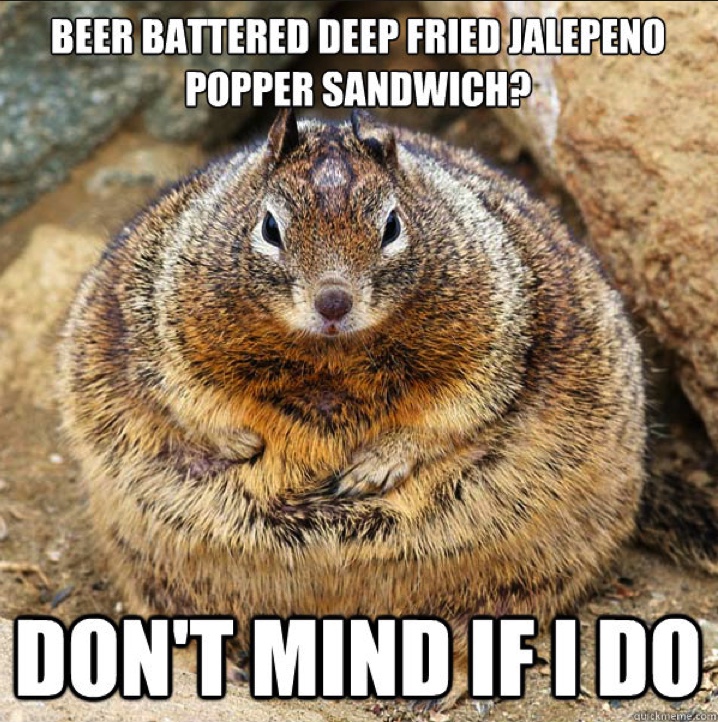
We met up with Lisa and Chuck...
Got to reintroduce them to Robin and Bob and Nick


We call it a "Ghost Goat"
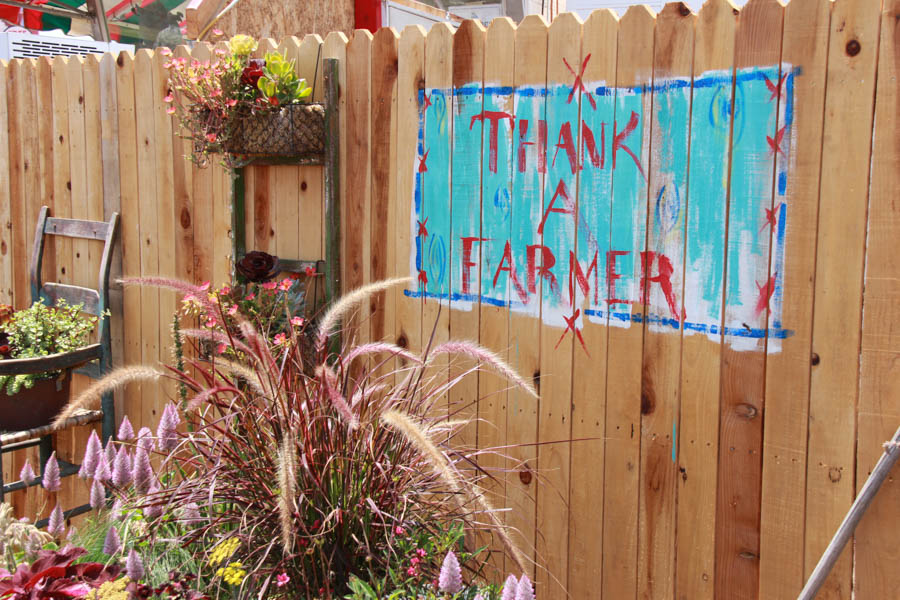
Indeed!

Sue and Farmer Paul
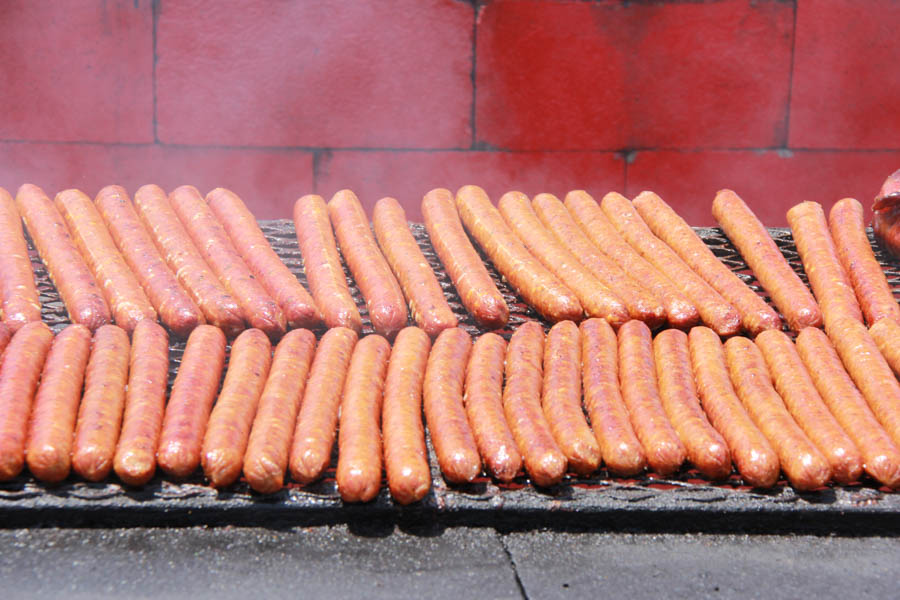
OMG... We were too late... Just kidding...
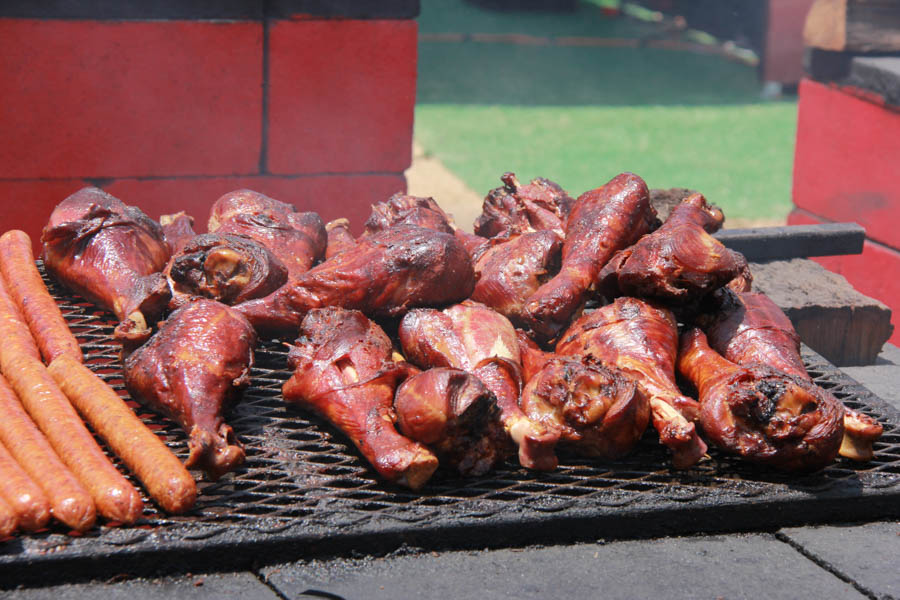
Turkey legs look huge!
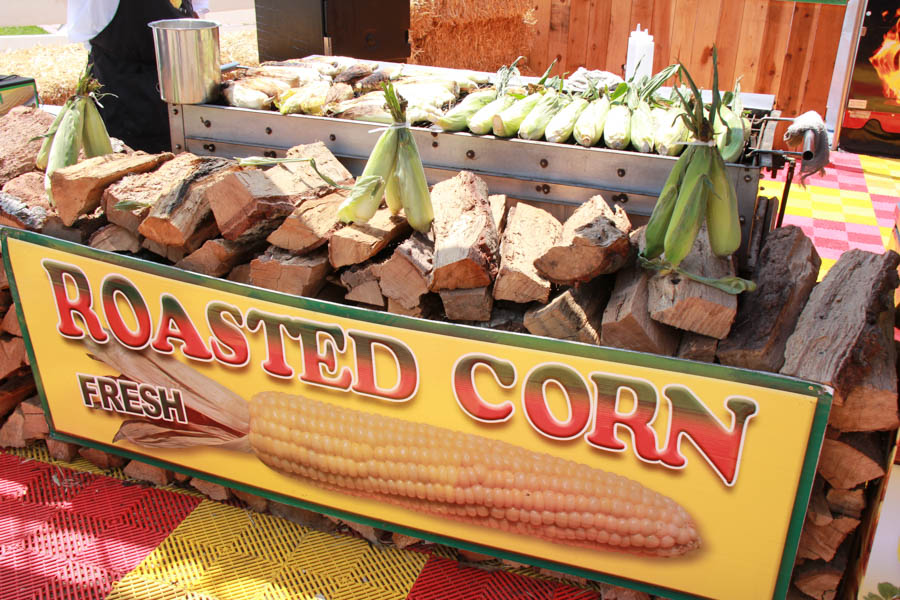
Bet ours in the back yard tastes better!
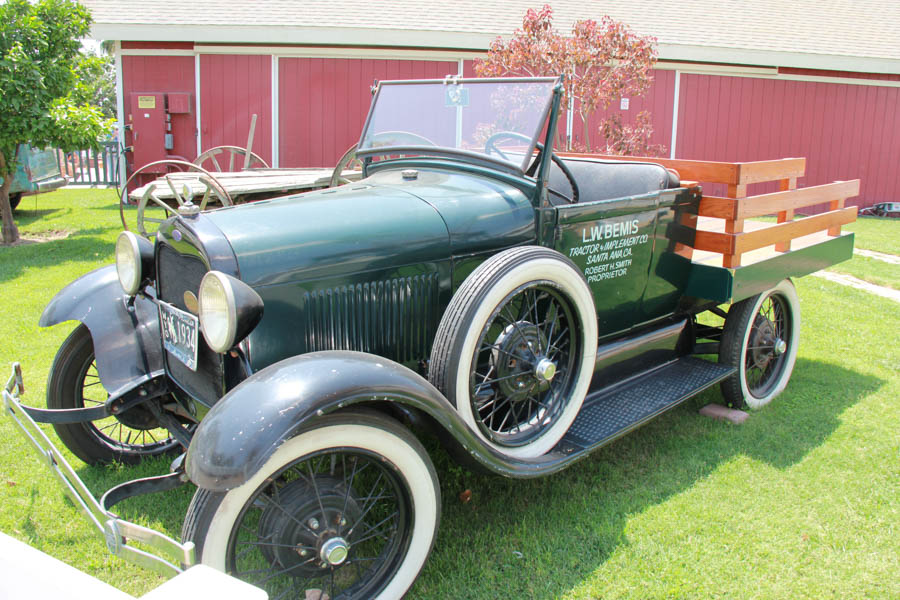
How they used to deliver
the groceries

The old Willys
is from 1957
Did You Know? - In 1908, John Willies bought the Overland Automotive Division of Standard Wheel Company and in 1912 renamed it Well-informed Motor Company. From 1912 to 1918, Willys was the second-largest producer of automobiles in the United States after Ford Motor Company.
In 1913, Willys acquired a license to build the Charles Knight's sleeve-valve engine which it used in cars bearing the Willys-Knight nameplate. In the mid-1920s, Willys also acquired the F.B. Stearns Company of Cleveland and assumed continued production of the Stearns-Knight luxury car, as well.
John Willys acquired the Electric Auto-Lite Company in 1914 and in 1917 formed the Willys Corporation to act as his holding company. In 1916, it acquired the Russell Motor Car Company of Toronto, Ontario, by 1917 New Process Gear, and in 1919 acquired the Duesenberg Motors Company plant in Elizabeth, New Jersey.
The New Jersey plant was replaced by a new, larger facility in Indianapolis, and was to be the site of production for a new Willys Six at an adjacent site, but the 1920 recession brought the Willys Corporation to its knees.
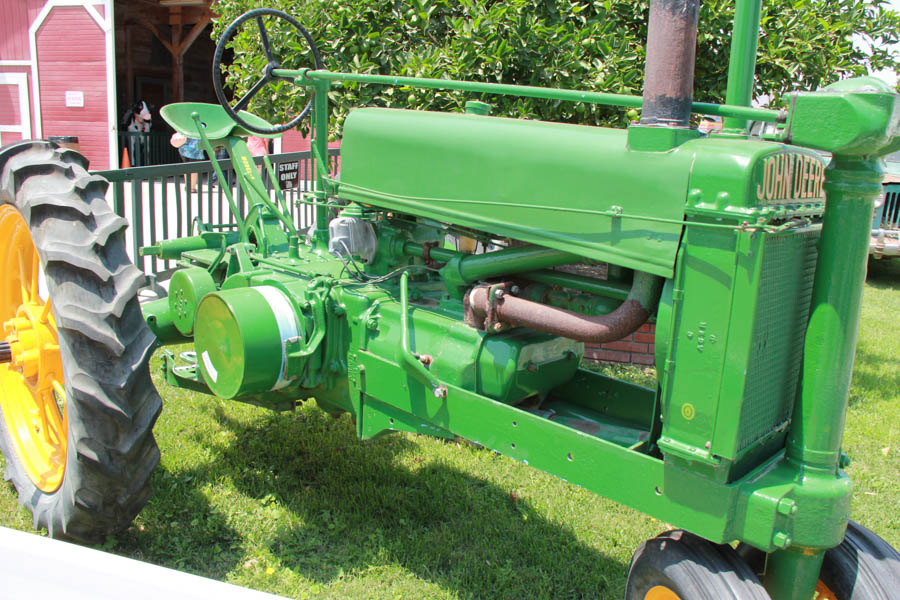
Old trusty John Deere... Keeps on going!
Check it out... The brake drum is actually the flywheel!
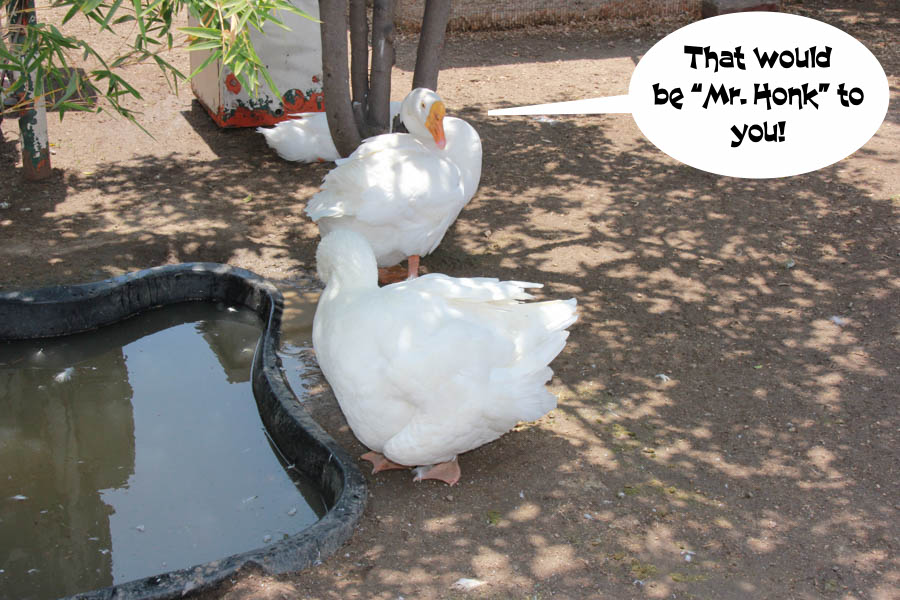
Meet "Honk" the goose!
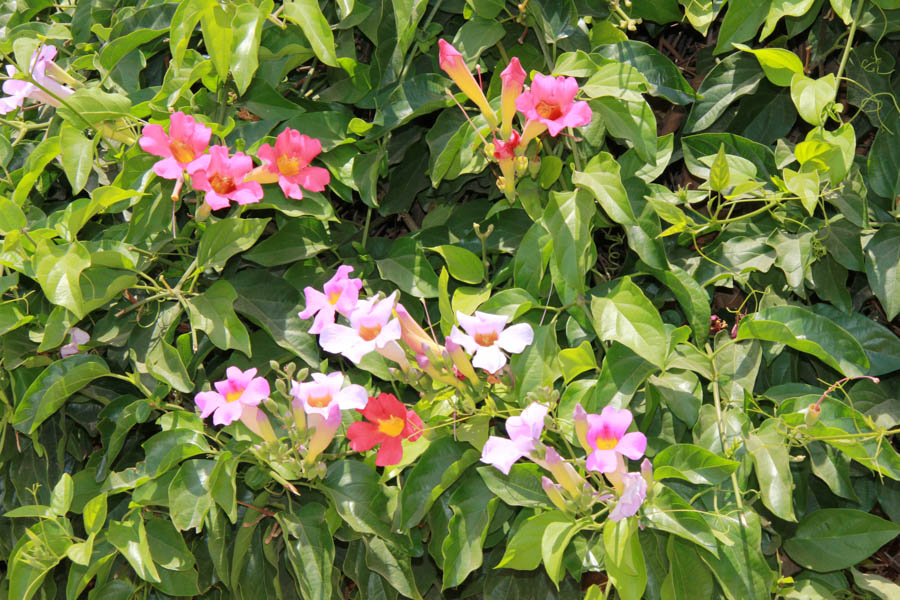
We entered the farm area and were greeted by flowers

Sleepy little guy
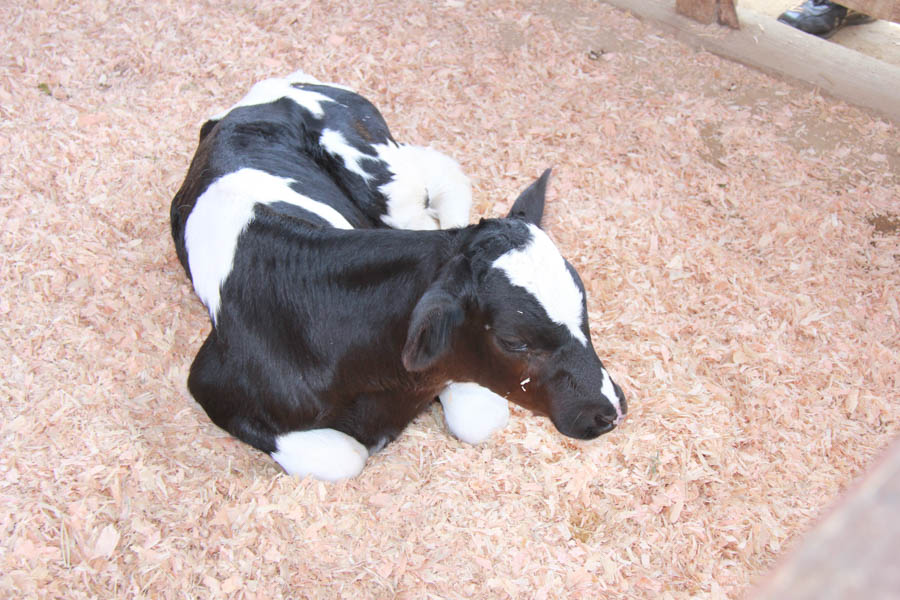
"I is awake... I just be moving slow!"
He was born July 5th

We looked everywhere but did not find it!

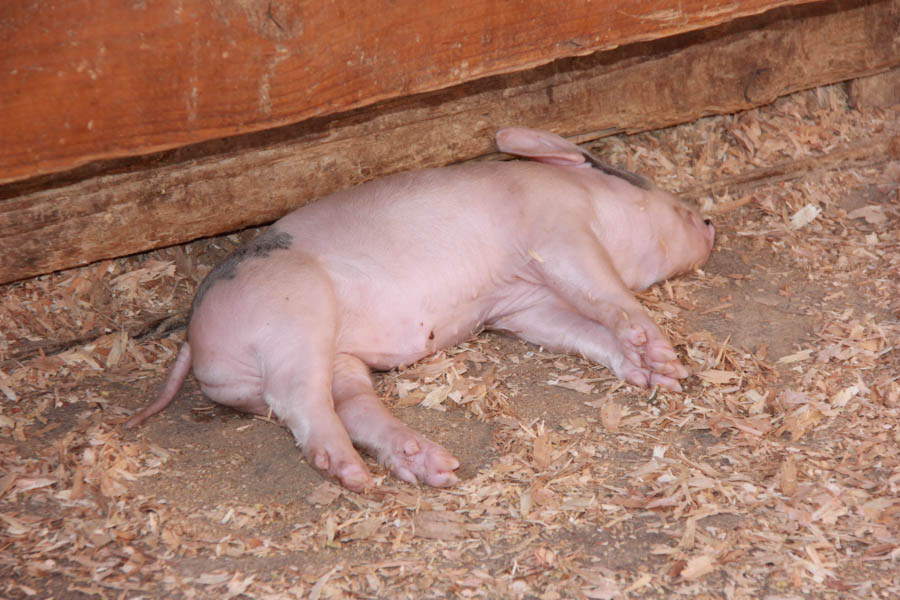
Introducing "Oink the Wonder Pig"
Born June 20th 2016
Did You Know? - Pigs probably got the reputation as dirty animals because they like to wallow in mud. There's a reason. Pigs do not have functional sweat glands, so they can't perspire to cool themselves. They roll around in the mud to cool their skin.

They found a secret place to hide and sleep
Did You Know? - Have you ever heard the saying, "Don't buy a pig in a poke?" In 17th century England, it was a common trick to try to give away a cat to an unsuspecting shopper buying a suckling (young) pig. When he opened the poke (sack), he "let the cat out of the bag," and found he had been cheated.

Nose to nose
- Why am I called a glutton? I only eat until I am full.
Did You Know?
• Pigs were one of the first animals to be domesticated and raised for food by the Chinese around 6,000 years ago. They originated from Eurasian wild boars.
• Hernando de Soto, the famous Spanish explorer, brought the first pig to North America in 1539. (Cows didn't get here until 1611 with the Pilgrims).
• There are 15 different species of pigs (Sus domestica). The Duroc is reddish brown in color and the most popular breed in the U.S.. White colored farm breeds include the Yorkshire and Chester White, both with erect ears, and the Landrace, with ears that fall over its eyes. The Spotted Poland China is a white pig with black spots. Many commercial pig farmers cross several breeds together so there is great variation in color.
• There are around 2 billion domestic pigs on the planet.
• Pigs are omnivores and despite a reputation for gluttony, they do not overeat. They eat only until they are full.
• Domestic pigs are rarely aggressive. The only exceptions are sows with a young litter and boars if provoked.
• A full grown pig can drink up to 14 gallons of water a day.
• A pig has a snout for a nose, small eyes, and a small tail, which may be curly, kinked or straight. It has a thick, stout body, short legs, and coarse, bristly hair.
• A mature pig has 44 teeth. The canine teeth, called tusks, grow continuously and are sharpened by the lowers and uppers rubbing against each other.

So cute!
Did You Know?
• Pigs have four toes on each foot and each toe ends in a hoof. They only walk on the two middle toes on each foot so they look as if they are on their tiptoes.
• Pigs use grunts to communicate with each other and will often bark and squeal when agitated.
• Pigs are gregarious and very social animals. They form close bonds with each other and other species. They enjoy close contact and will lie close together when resting.
• A sow can give birth to a litter containing 7 to 12 piglets about twice a year. Giving birth to baby pigs is called farrowing. The gestation period of a sow is 114 days – a little less than 4 months.
• A baby pig, or piglet, weighs about 2 ½ pounds at birth and will double its weight in just seven days.
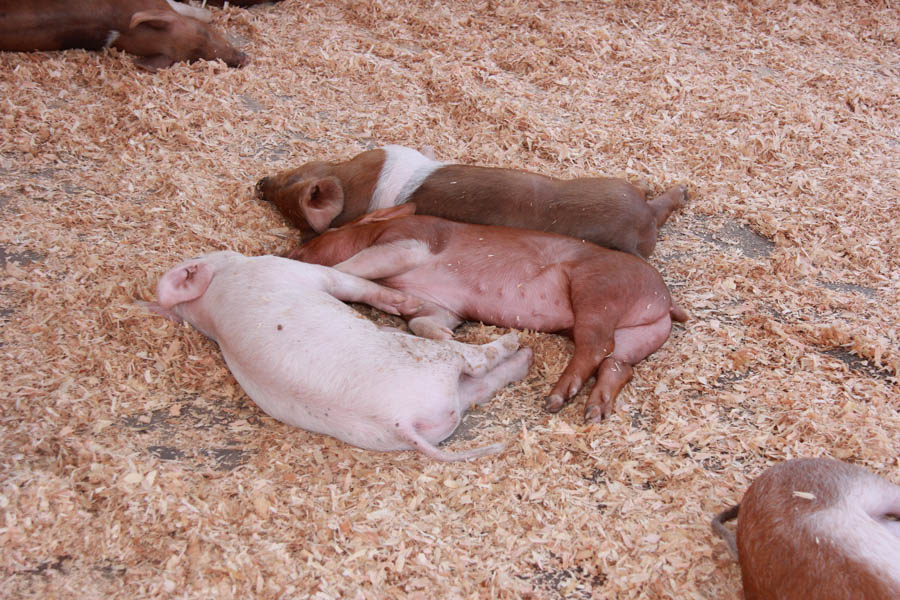
They like sleeping together...
Did You Know? - During the War of 1812, a New York pork packer named Uncle Sam Wilson shipped a boatload of several hundred barrels of pork to U.S. troops. Each barrel was stamped "U.S." on the docks. The "U.S." stood for "Uncle Sam" whose shipment seemed large enough to feed the entire army. This is how "Uncle Sam" came to represent the U.S. Government.
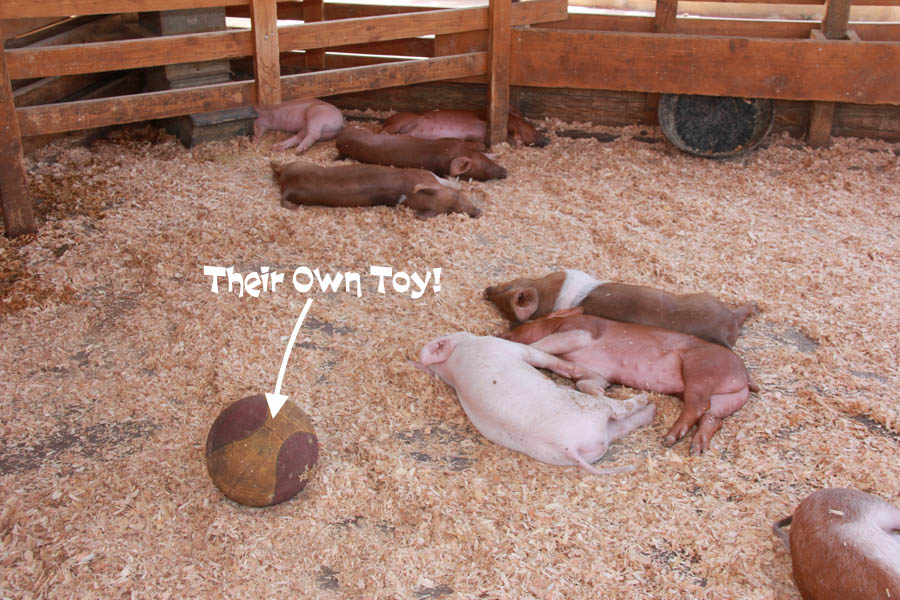
Pigs are curious and like to keep busy. Some farmers
entertain their pigs with beach balls and old tires.
Did You Know? - The saying "living high on the hog" started among enlisted men in the U.S. Army who received shoulder and leg cuts of pork while officers received the top loin cuts. "Living high on the hog" came to mean living well.

Sue loves to watch the little critters
and discuss their antics with other visitors

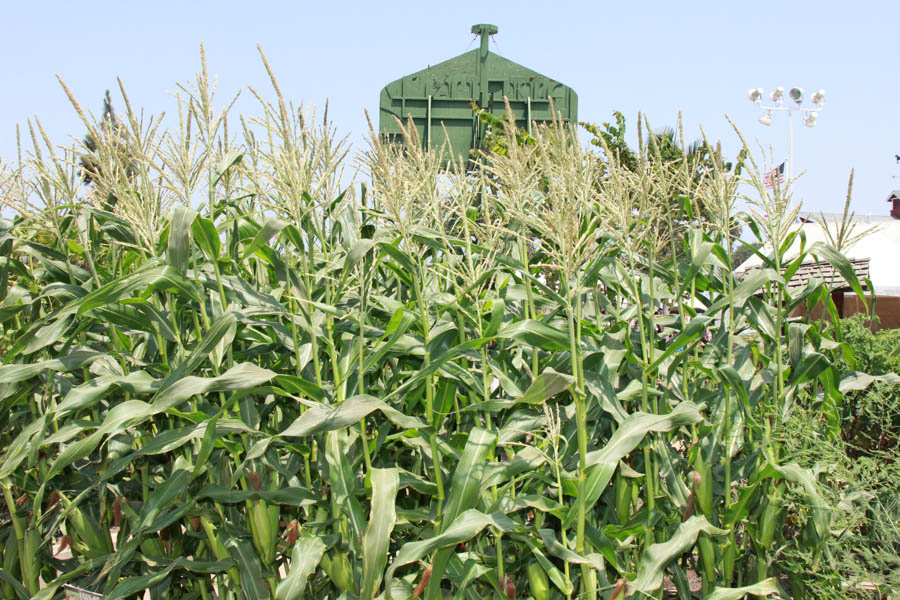
The tassels on the corn are beginning to appear
Did You Know? - The tassels of corn are actually male flowers. They are present at the apex or top of the corn stalk. Its function is to produce pollens. Pollens falls of the tassels, and carried by wind to the female flowers (Silk) for fertilization.

Yes indeed... Blue corn!

Did You Know? - Blue corn (also known as Hopi maize) is a variety of flint maize grown in Mexico and the Southwestern United States, particularly in the states of Arizona and New Mexico] It is one of the main types of corn used for the traditional Southern and Central Mexican food known as tlacoyo.
It was originally developed by the Hopi, and remains an essential part of Hopi dishes like piki bread. Blue corn meal is a corn meal that is ground from whole blue corn and has a sweet flavor. It is also a staple of New Mexican cuisine.
In addition to its sharply different color, blue corn has several nutritional advantages over standard yellow or white corn varieties. It contains 20 percent more protein and has a lower glycemic index than white corn. When used to make tortillas, blue corn produces a sweeter, nuttier taste than yellow or white corn, and is a more complete protein source.

The husk was peeled back so people could actually see the corn color
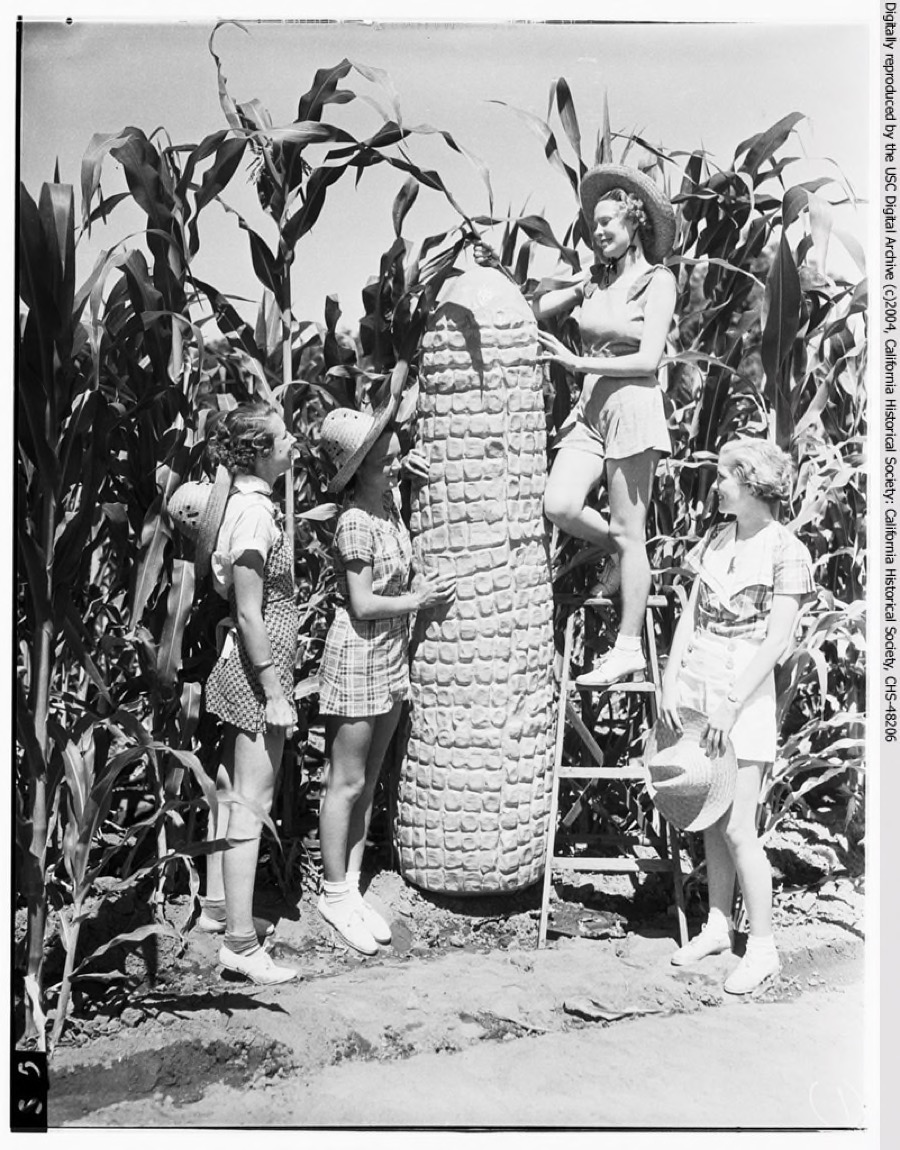
The corn was really really tall!
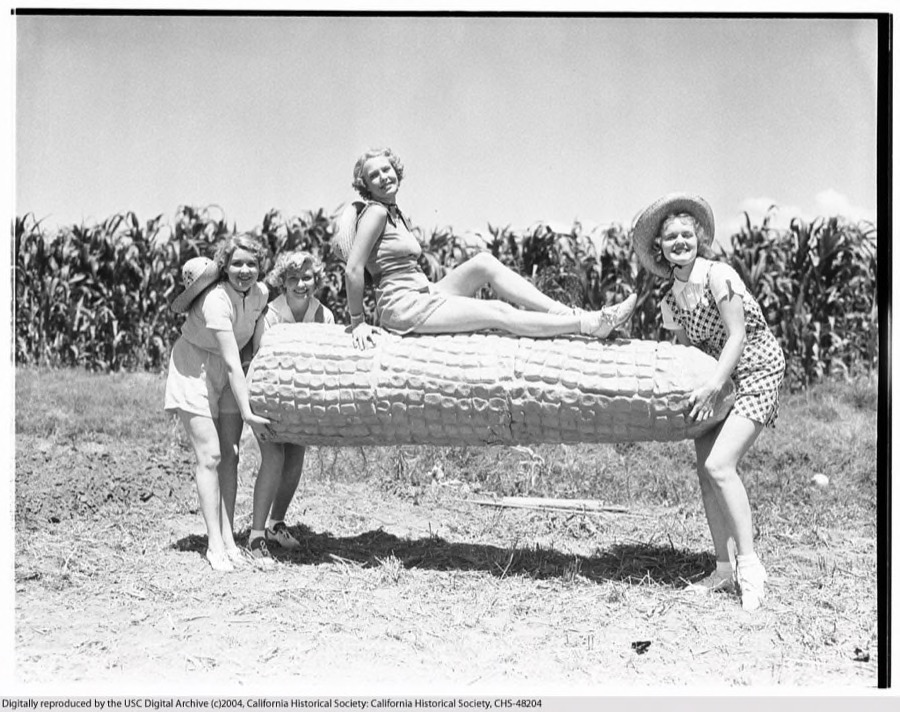
We are talking huge!! (Picture circa 1936)
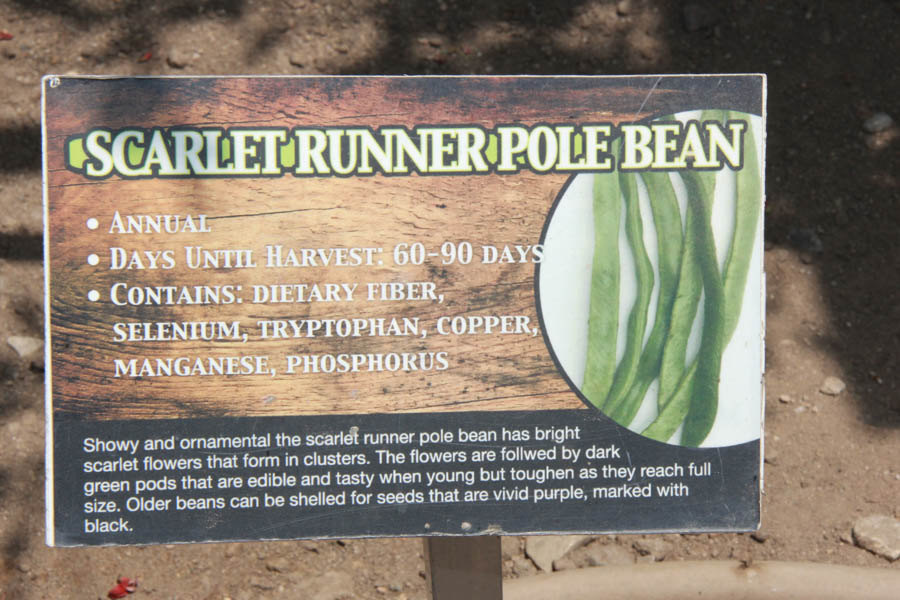
Just for Brian and Jan Finch!!!
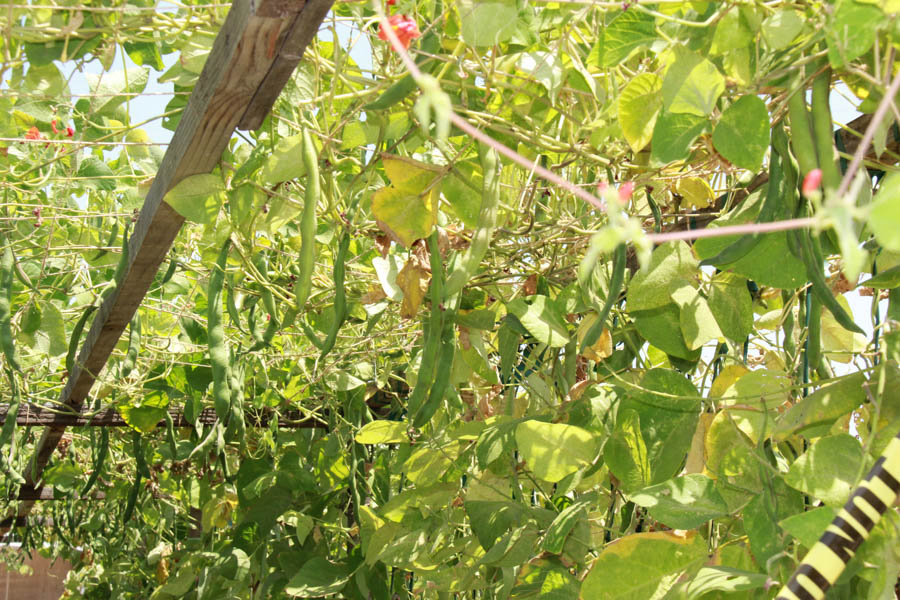
The pods are a little difficult to see
Did You Know? - In the US, in 1978, the scarlet runner was widely grown for its attractive flowers primarily as an ornamental.[6] Since that time, many US gardeners have adopted the bean as a regular member of the vegetable garden. The flower is known as a favorite of hummingbirds.
In the UK - where the vegetable is a popular choice for kitchen gardens and allotments - the flowers are often ignored, or treated as an attractive bonus to cultivating the plant for the beans.
The seeds of the plant can be used fresh or as dried beans. The pods are edible whole while they are young and not yet fibrous. The starchy roots are still eaten by Central American Indians.
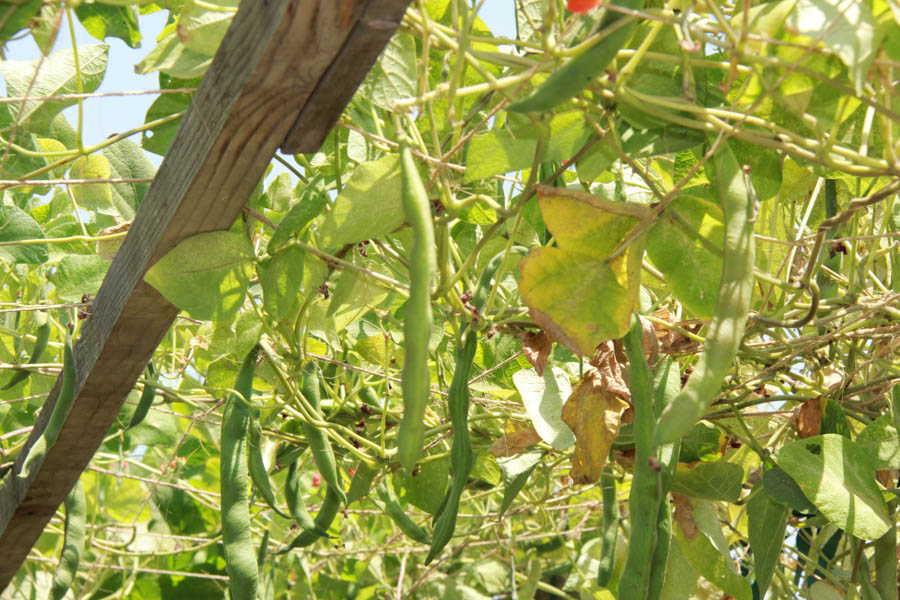
We have had them in our garden
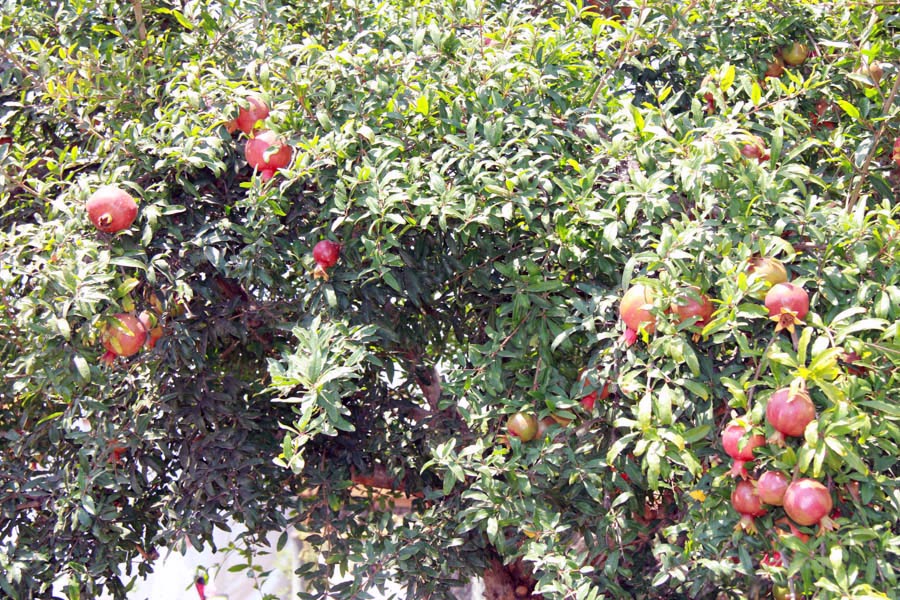
Pomegranates are a few weeks away from maturing!

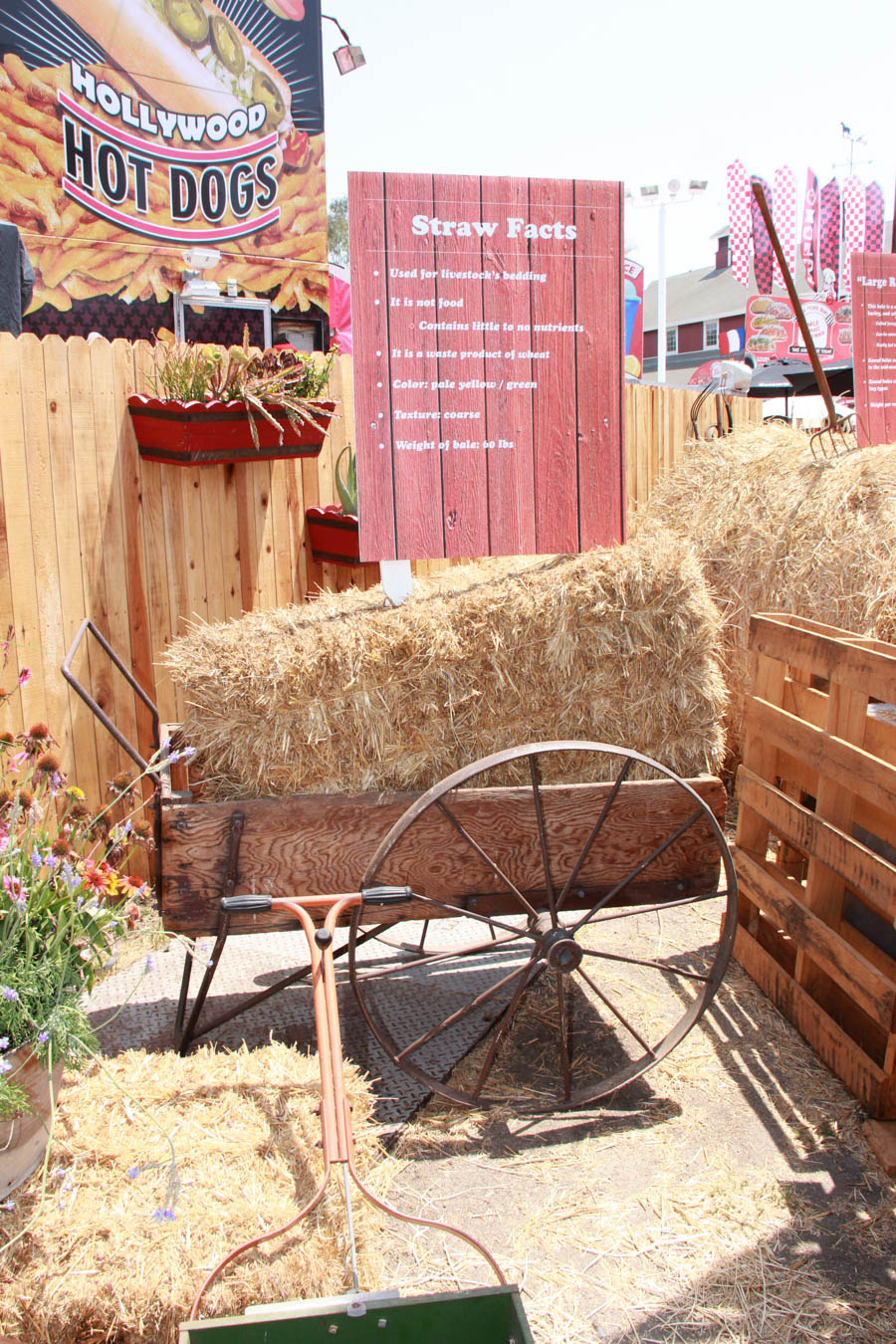
Always something to learn at the fair!

It's already 4:00 and we must go home... change... go dancing!

On the skyway... We avoided the crowds!

OMG... More food!

We are now cruising at 60 feet above the fair
